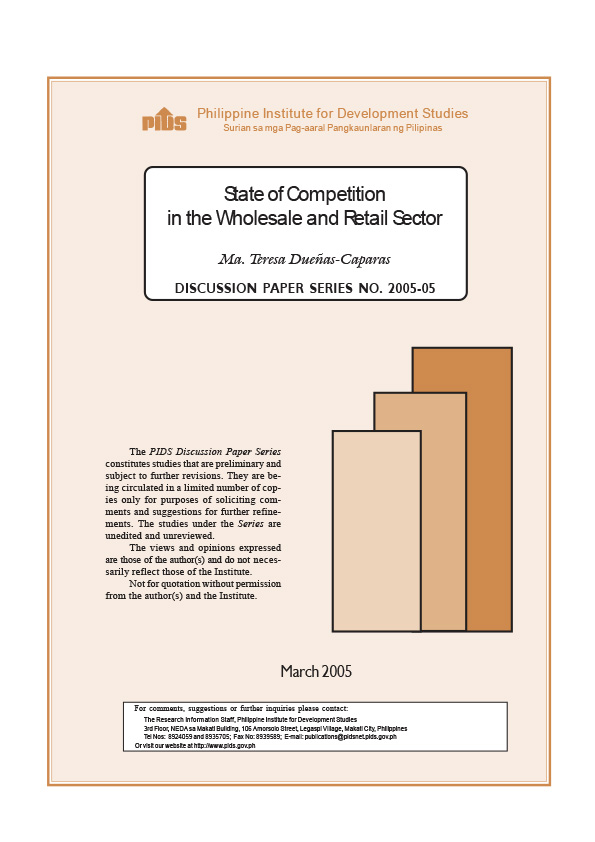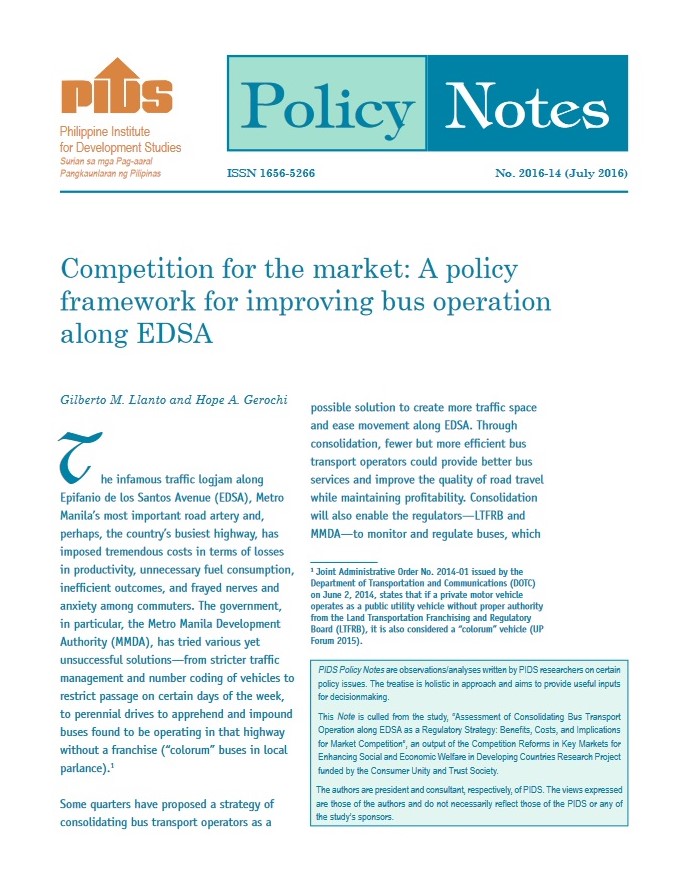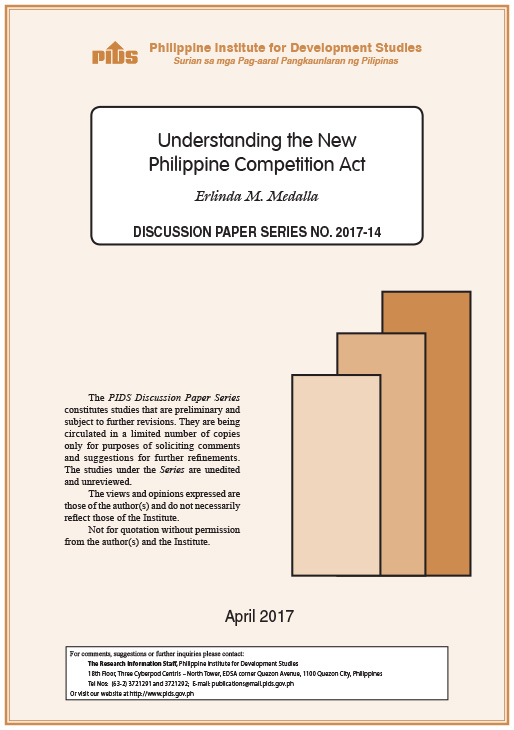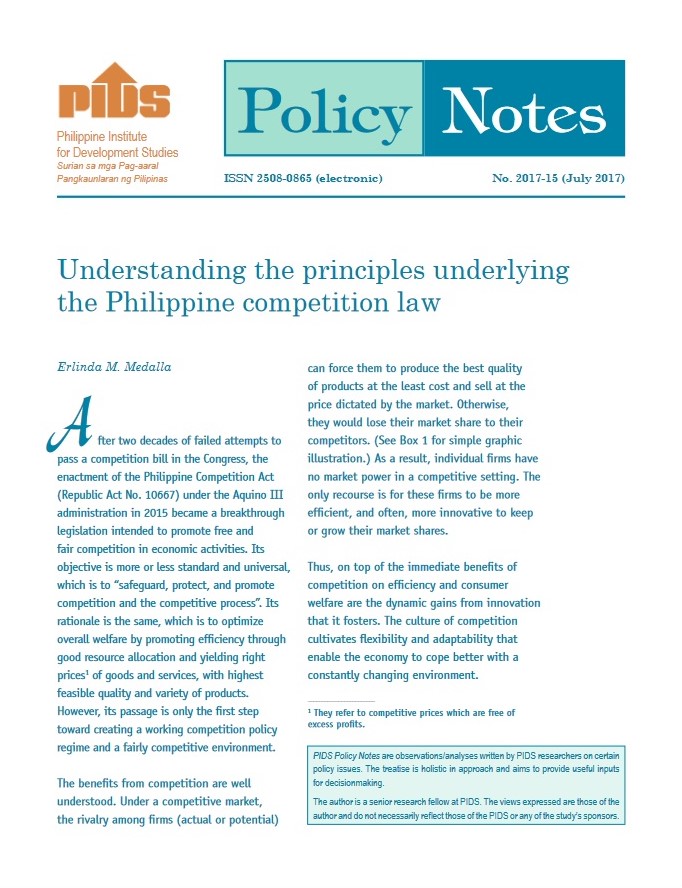The study assesses the state of competition in the Philippine wholesale and retail sector, focusing on the distribution of specialized goods and pharmaceutical products. It uses the traditional tools of analysis like concentration ratios and price-cost margins in determining the competitive state of the sector. The study also analyzes the other dimensions in retail competition like price, geographical location, retail product and retail service. Industry data from the National Statistics Office were used in the analysis, aided by a small-scale survey conducted in the Metro Manila area. The department store and grocery subsector appears to operate in a competitive environment despite the presence of two big dominating firms in the market. No price or quantity leader-follower behavior was observed, as validated by the tools used in the analysis. On the other hand, one firm, whose strategic advantages include economies of scope and space, retail image and consumer loyalty, dominates the distribution of pharmaceutical products. Potential market entrants face these forms of challenges--factors that are not regarded as anti-competitive and are welfare enhancing to the general public. The need for competition policy is recommended to guard against possible merger of the giant firms in the department store and grocery subsector. Any possible collusion between the big firms could result to a monopolistic outcome. The study observes that the apparent high price of pharmaceutical products is mainly attributed to the manufacturing process, and not at the distribution of these goods. Hence, it is recommended that a study analyzing the state of competitiveness of manufacturing pharmaceutical products be conducted.













